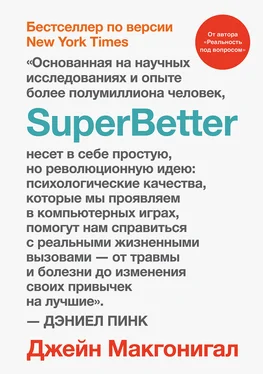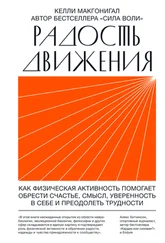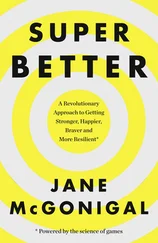Bethany E. Kok et al. How Positive Emotions Build Physical Health: Perceived Positive Social Connections Account for the Upward Spiral Between Positive Emotions and Vagal Tone // Psychological Science. 2013. № 24 (7). P. 1123–1132; Bethany E. Kok, Barbara L. Fredrickson . Upward Spirals of the Heart: Autonomic Flexibility, as Indexed by Vagal Tone, Reciprocally and Prospectively Predicts Positive Emotions and Social Connectedness // Biological Psychology. 2010. № 85 (3). P. 432–436.
Barbara L. Fredrickson . The Role of Positive Emotions in Positive Psychology: The Broadenand-Build Theory of Positive Emotions // American Psychologist. 2001. № 56 (3). 218 p.
Barbara Fredrickson . Positivity: Top-Notch Research Reveals the 3 to 1 Ratio That Will Change Your Life. New York: Random House, 2009.
John Mordechai Gottman. What Predicts Divorce?: The Relationship Between Marital Processes and Marital Outcomes. London: Psychology Press, 2014.
Robert M. Schwartz et al. Optimal and Normal Affect Balance in Psychotherapy of Major Depression: Evaluation of the Balanced States of Mind Model // Behavioural and Cognitive Psychotherapy. 2002. № 30 (4). P. 439–450.
Arménio Rego et al. Optimism Predicting Employees’ Creativity: The Mediating Role of Positive Affect and the Positivity Ratio // European Journal of Work and Organizational Psychology. 2012. № 21 (2). P. 244–270.
Amit Shrira et al. The Positivity Ratio and Functioning Under Stress // Stress and Health. 2011. № 27 (4). P. 265–271.
Amit Shrira et al. The Positivity Ratio and Functioning Under Stress // Stress and Health. 2011. № 27 (4). P. 265–271.
Mara Mather, Laura L. Carstensen . Aging and Motivated Cognition: The Positivity Effect in Attention and Memory // Trends in Cognitive Sciences. 2005. № 9 (10). P. 496–502; Suzanne Meeks et al. Positivity and Well-Being Among Community-Residing Elders and Nursing Home Residents: What Is the Optimal Affect Balance? // Journals of Gerontology Series B: Psychological Sciences and Social Sciences. 2012. № 67 (4). P. 460–467.
Ed Diener, Ed Sandvik, William Pavot. Happiness Is the Frequency, Not the Intensity, of Positive Versus Negative Affect // Subjective Well-Being: An Interdisciplinary Perspective. 1991. № 21. P. 119–139.
Клинические исследования показали, что рост уровня витамина D ускоряет восстановление мозга. Активированный витамин D представляет собой нейростероид. Он может стимулировать рост новых нейронов и защитить существующие нейроны. Прим. автора.
John F. Cryan, Timothy G. Dinan . Mind-Altering Microorganisms: The Impact of the Gut Microbiota on Brain and Behaviour // Nature Reviews Neuroscience. 2012. № 13 (10). P. 701–712.
Цифровой детокс — период времени, когда человек сознательно отказывается от смартфонов, компьютеров, планшетов и других цифровых устройств с целью снятия стресса и погружения в реальное общение.
Kok, Fredrickson . Upward Spirals of the Heart.
Brian M. Curtis, James H. O’Keefe, Jr . Autonomic Tone as a Cardiovascular Risk Factor: The Dangers of Chronic Fight or Flight // Mayo Clinic Proceedings. 2002. № 77 (1).
June Gruber et al. Risk for Mania and Positive Emotional Responding: Too Much of a Good Thing? // Emotion. 2008. № 8 (1). 23 p.
Adam M. Grant, Barry Schwartz . Too Much of a Good Thing: The Challenge and Opportunity of the Inverted U // Perspectives on Psychological Science. 2011. № 6 (1). P. 61–76.
Patricia E. Suess, Stephen W. Porges, Dana J. Plude . Cardiac Vagal Tone and Sustained Attention in School-Age Children // Psychophysiology. 1991. № 31 (1). P. 17–22; Lynn Fainsilber Katz, John M. Gottman . Vagal Tone Protects Children from Marital Conflict // Development and Psychopathology. 1995. № 7 (1). P. 83–92; Bonny Donzella et al. Cortisol and Vagal Tone Responses to Competitive Challenge in Preschoolers: Associations with Temperament // Developmental Psychobiology. 2000. № 37 (4). P. 209–220.
Kok, Fredrickson . Upward Spirals of the Heart.
Netflix — американская развлекательная компания, поставщик фильмов и сериалов на основе потокового мультимедиа.
Xbox — игровая приставка, разработанная и производившаяся компанией Microsoft.
Stacey Kennelly . When Guilt Stops Gratitude. Greater Good: The Science of a Meaingful Life. 2014. January 14, http://greatergood.berkeley.edu/article/item/when_guilt_stops_gratitude.
Научные консультанты SuperBetter: Джеймс Доти из Стэнфордской медицинской школы, Дачер Келтнер из Научного центра всеобщего блага Калифорнийского университета в Беркли, Келли Макгонигал из Центра исследования и обучения состраданию и альтруизму Стэнфордского университета, Энн Ропке, аспирант по направлению клинической психологии из Пенсильванского университета, Лиза Чаудхари, научный сотрудник Медицинской школы Университета штата Огайо. Также свой вклад внес научный популяризатор Без Максвелл.
Todd B. Kashdan, Jonathan Rottenberg . Psychological Flexibility as a Fundamental Aspect of Health // Clinical Psychology Review. 2010. № 30 (7). P. 865–878.
Todd B. Kashdan, Jennifer Q. Kane . Post-Traumatic Distress and the Presence of Post-traumatic Growth and Meaning in Life: Experiential Avoidance as a Moderator // Personality and Individual Differences. 2011. № 50 (1). P. 84–89; Holly K. Orcutt, Scott M. Pickett, E. Brooke Pope . Experiential Avoidance and Forgiveness as Mediators in the Relation Between Traumatic Interpersonal Events and Post-traumatic Stress Disorder Symptoms // Journal of Social and Clinical Psychology. 2005. № 24 (7). P. 1003–1029.
Steven C. Hayes et al. Acceptance and Commitment Therapy: Model, Processes and Outcomes // Behaviour Research and Therapy. 2006. № 44 (1). P. 1–25; Neharika Chawla, Brian Ostafin . Experiential Avoidance as a Functional Dimensional Approach to Psychopathology: An Empirical Review // Journal of Clinical Psychology. 2007. № 63 (9). P. 871–890; Frank W. Bond, David Bunce . The Role of Acceptance and Job Control in Mental Health, Job Satisfaction, and Work Performance // Journal of Applied Psychology. 2003. № 88 (6). 1057 p.; Jodie Butler, Joseph Ciarrochi . Psychological Acceptance and Quality of Life in the Elderly // Quality of Life Research. 2007. № 16 (4). P. 607–615.
Читать дальше











